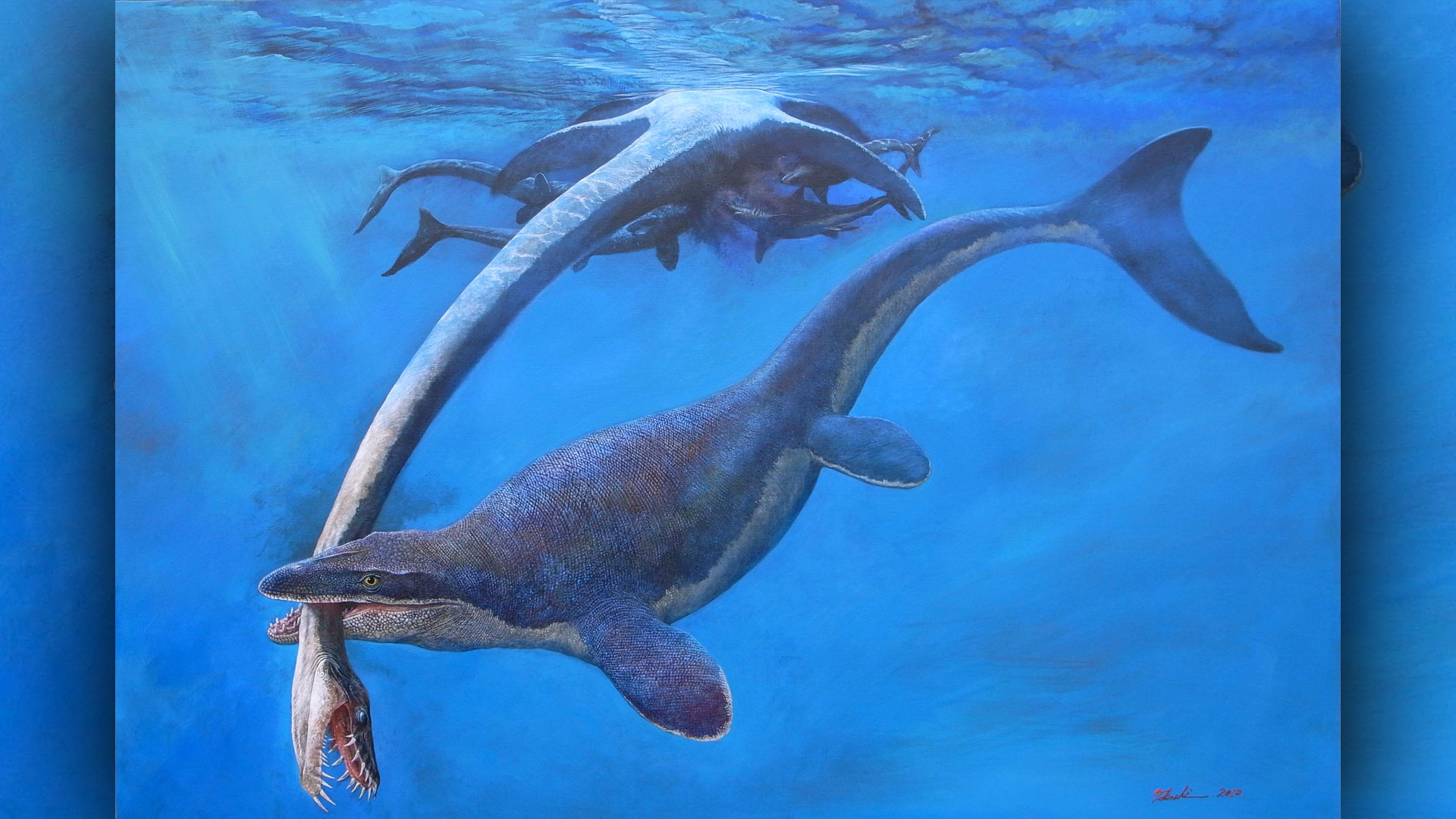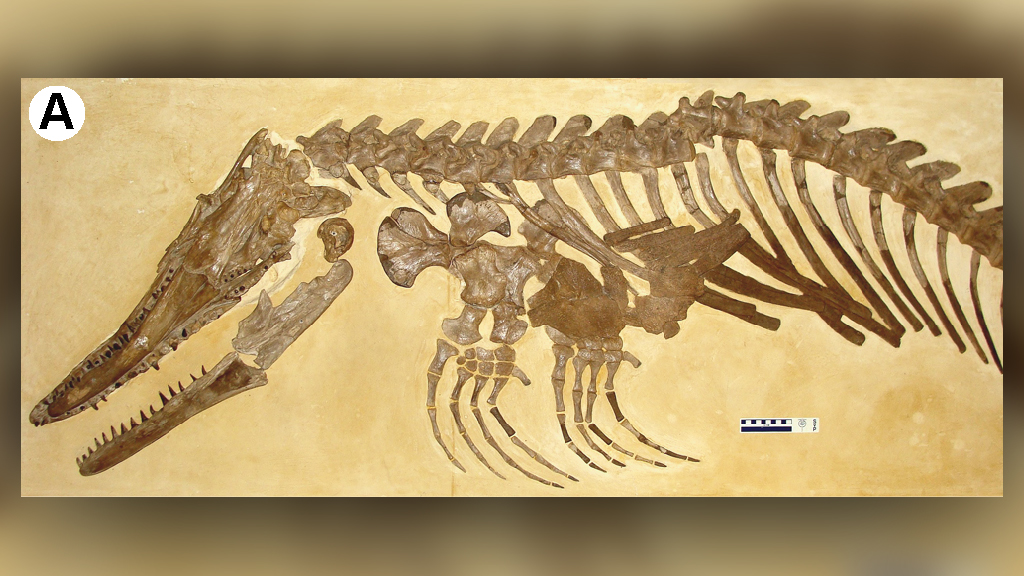An 18-foot-long sea monster ruled the ancient ocean that once covered Kansas
It swam through Cretaceous seas 80 million years ago.

About 80 million years ago, when dinosaurs walked the Earth, an 18-foot-long (5 meters) sea monster called a mosasaur cruised the ancient ocean that once covered western Kansas, snagging prey with its slender, tooth-lined snout.
Paleontologists discovered the fossil of this beast in the 1970s, but they had difficulty classifying it, so it ended up stored with other mosasaur specimens in the Platecarpus genus, at Fort Hays State University's Sternberg Museum of Natural History (FHSM) in Kansas.
Recently, researchers revisited the enigmatic fossil — pieces of a skull, jaw and a few bones from behind the head — and found that the reptile didn't belong in the Platecarpus genus. Rather, it was a close relative of a rare mosasaur species known from just one specimen, scientists reported in a new study.
Related: Image gallery: Ancient monsters of the sea
The newly described species, formerly known as specimen FHSM VP-5515 and now named Ectenosaurus everhartorum, is the second known species in the Ectenosaurus genus. The only other species is Ectenosaurus clidastoides, which was described in 1967, according to the study.
E. everhartorum's head was about 2 feet (0.6 m) long, and like E. clidastoides, E. everhartorum had a snout that was narrow and elongated compared with those of other mosasaurs, said study co-author Takuya Konishi, a vertebrate paleontologist and assistant professor at the University of Cincinnati.
"It's a kind of skinny snout for agile, speedy snapping of fish, rather than biting into something hard like turtle shells," Konishi told Live Science. The narrowness of the jaw and of a bone at the top of the head hinted that VP-5515 belonged in the Ectenosaurus genus, even though the fossil was about 500,000 to 1 million years younger than the E. clidastoides specimen, Konishi said.
Sign up for the Live Science daily newsletter now
Get the world’s most fascinating discoveries delivered straight to your inbox.

But in some ways, the skull wasn't Ectenosaurus-like at all. For example, it lacked a bony bump at the end of its snout. The snout on VP-5515 was also shorter than the one on E. clidastoides, according to the study.
"We knew it was a new species, but we didn't know if it was an Ectenosaurus or not," Konishi said. "To answer that puzzle, we were eventually able to find another feature where the jaw joint was, at the back end of the lower jaw." There, the researchers detected a small notch that didn't appear in any mosasaur species — except one.
"That little depression turned out to be a newly discovered consistent feature for the genus Ectenosaurus," Konishi said. "You have this Ectenosaurus united by the little notch at the end of the lower jaw, but then it's consistently different at the level of the species from the generic type — that is to say, the first species assigned to the genus."
One lingering question about Ectenosaurus is why this genus is so poorly represented among mosasaur fossils from western Kansas. To date, paleontologists have uncovered more than 1,800 mosasaur specimens at the site of the former inland sea. But for now, the entire Ectenosaurus genus is represented by just two fossils — one for each species.
"That's very strange," Konishi told Live Science. "Why is it so rare for a mosasaur, where you have hundreds of Platecarpus from the same locality? Does that mean they were living near shore, or were they living farther south or farther north? We just don't know."
The findings were published Aug. 26 in the Canadian Journal of Earth Sciences.
Originally published on Live Science.

Mindy Weisberger is an editor at Scholastic and a former Live Science channel editor and senior writer. She has reported on general science, covering climate change, paleontology, biology and space. Mindy studied film at Columbia University; prior to Live Science she produced, wrote and directed media for the American Museum of Natural History in New York City. Her videos about dinosaurs, astrophysics, biodiversity and evolution appear in museums and science centers worldwide, earning awards such as the CINE Golden Eagle and the Communicator Award of Excellence. Her writing has also appeared in Scientific American, The Washington Post and How It Works Magazine. Her book "Rise of the Zombie Bugs: The Surprising Science of Parasitic Mind Control" will be published in spring 2025 by Johns Hopkins University Press.









